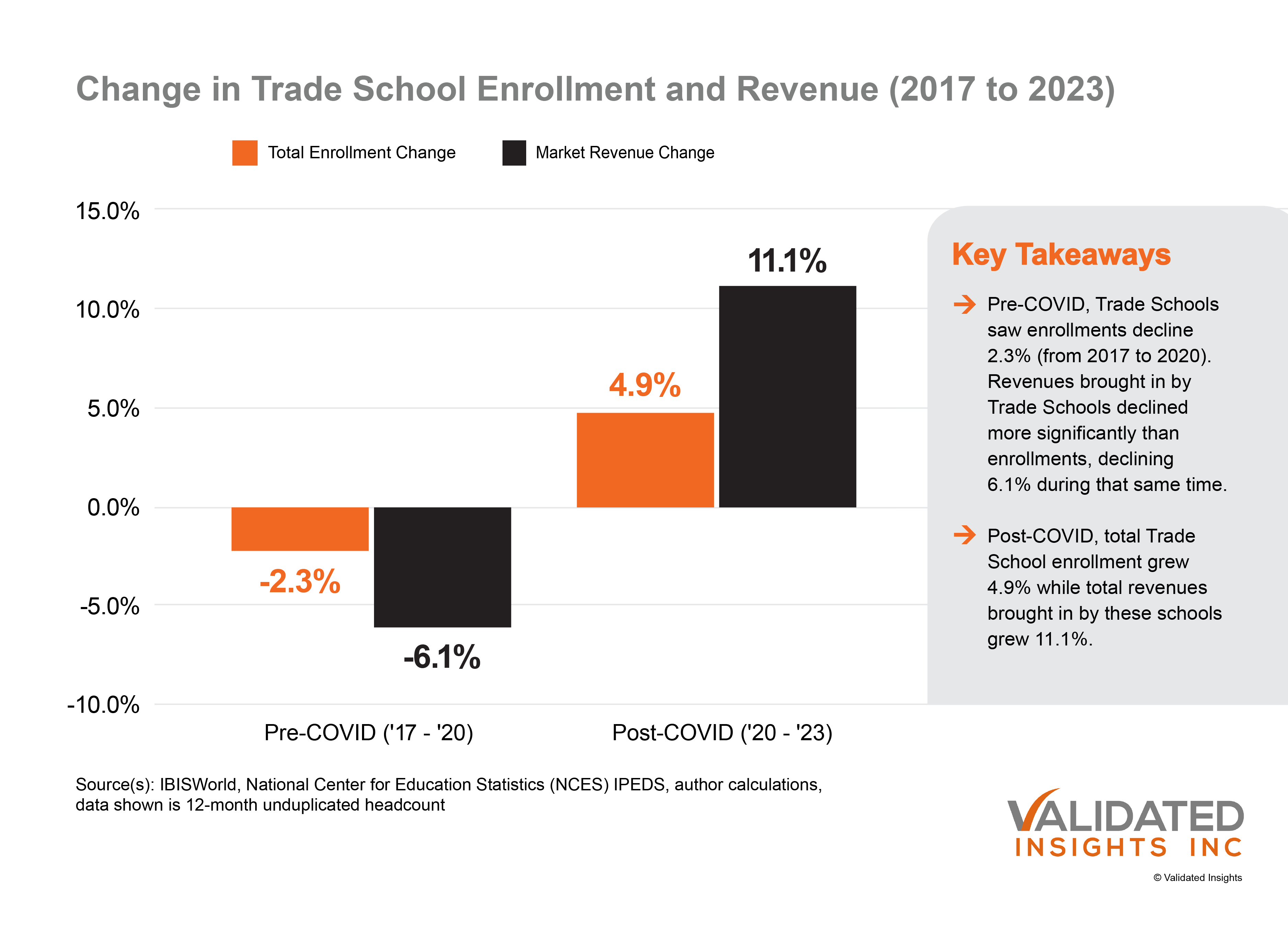Trade School Enrollment Surges Post-Pandemic, Outpacing Traditional Universities — from businesswire.com
New Report Highlights Growth in Healthcare and Culinary Arts Programs
CHICAGO–(BUSINESS WIRE)–A new report released today by Validated Insights, a higher education marketing firm, reveals a significant increase in trade school enrollment following the pandemic, with a 4.9% growth from 2020 to 2023. This surge contrasts sharply with a 0.6% decline in university enrollment during the same period, highlighting a growing preference for career-focused education.
…
The report highlights the diverse landscape of trade schools, with varying enrollment trends across different categories and subtypes. While some sectors face challenges, others, like Culinary Arts and Beauty and Wellness, present significant growth opportunities and shifting student attitudes.
A trend colleges might not want applicants to notice: It’s becoming easier to get in — from hechingerreport.orgby Jon Marcus
Despite public perception, and for the first time in decades, acceptance rates are going up
As enrollment in colleges and universities continues to decline — down by more than 2 million students, or 10 percent, in the 10 years ending 2022 — they’re not only casting wider nets. Something else dramatic is happening to the college application process, for the first time in decades:
It’s becoming easier to get in.
Colleges and universities, on average, are admitting a larger proportion of their applicants than they did 20 years ago, new research by the conservative think tank the American Enterprise Institute finds.











